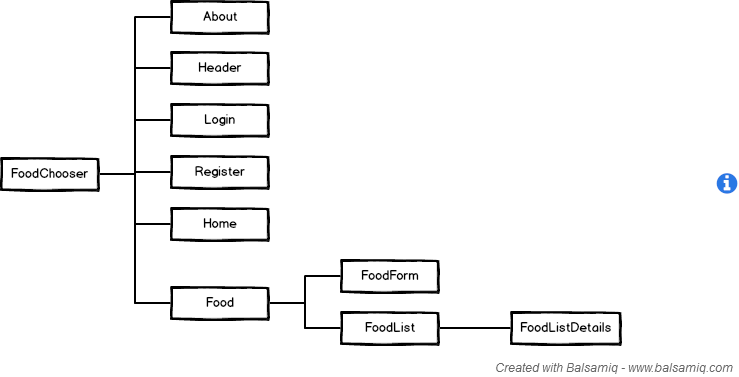Angular, ASP.NET WebAPI, Azure & Cordova, Cross Platform – My Private Hackathon Part 2
Angular, ASP.NET WebAPI, Azure & Cordova, Cross Platform – My Private Hackathon Part 2
In the last blog postI lost a few words about the REST-API the FoodChooser is talking to. In this blog, I want to talk about the clients I developed. This is: Angular, ASP.NET WebAPI, Azure & Cordova, Cross Platform – My Private Hackathon Part 2.
Well I started coding an AngularJs 1.x Client with Typecript which is available here
https://github.com/FabianGosebrink/ASPNET-Foodchooser-Cross-Platform-AngularJS
Of course, I could not stop looking and digging into Angular. So I wrote this client too which is available here:
https://github.com/FabianGosebrink/Foodchooser-ASPNET-Angular-Cross-Platform
Inside this blog I want to lose a few words about how I wrote them, what the pitfalls were and how I came up with this solution.
I will only show Angular2 examples here because it’s the only client which is still maintained
Architecture
The application is divieded into several components with its child components. Due to the fact that the application is not that big at all there is no huge hierarchy.

So the only interesting thing is the Food-Component which has two child Components “FoodForm” and “FoodList”.
@Component({
selector: 'food-component',
directives: [ROUTER_DIRECTIVES, CORE_DIRECTIVES, FoodListComponent, FoodListFormComponent],
providers: [FoodDataService, FoodListDataService],
template: require('./food.component.html')
})
<!-- Page Content -->
<div class="container">
<!-- Introduction Row -->
<div class="row">
<div class="col-lg-12">
<h1 class="page-header">
Foodlists
<small>See all your food lists</small>
</h1>
</div>
</div>
<foodListForm-component></foodListForm-component>
<foodlists-component></foodlists-component>
</div>
The list component itself is not containing the details-view, but redirecting to it while iterating through all the foodItems:
import { Component, OnInit } from '@angular/core';
import { CORE_DIRECTIVES } from '@angular/common';
import { RouteConfig, ROUTER_DIRECTIVES } from '@angular/router-deprecated';
import { FoodDataService } from '../../shared/services/food.dataService';
import { FoodListDataService } from '../../shared/services/foodList.dataService';
import { FoodList } from '../../models/FoodList';
import { NeedsAuthentication } from '../../decorators/needsAuthentication';
@Component({
selector: 'foodlists-component',
directives: [ROUTER_DIRECTIVES, CORE_DIRECTIVES],
template: require('./foodlists.component.html')
})
@NeedsAuthentication()
export class FoodListComponent implements OnInit {
allLists: FoodList[];
constructor(private _foodListDataService: FoodListDataService) {
_foodListDataService.foodListAdded.subscribe((foodList: FoodList) => {
this.getAllLists();
});
}
public ngOnInit() {
this.getAllLists();
}
private getAllLists() {
this._foodListDataService
.GetAllLists()
.subscribe((response: FoodList[]) => {
this.allLists = response;
console.log(response.length);
}, error => {
this.errorMessage = error;
});
}
}
and the template
<!-- Team Members Row -->
<div class="row">
<div class="col-lg-12">
<h2 class="page-header">Your Lists <small>{{allLists?.length}}</small></h2>
</div>
<div class="col-lg-12">
<ul class="list-group">
<a
*ngFor="let item of allLists; let i=index"
[routerLink]="['/FoodListDetails', {id: item.Id}]"
>
<li class="list-group-item">{{item?.Name}}</li>
</a>
</ul>
</div>
</div>
Authentication
The Web API is providing a token endpoint to get tokens from after the login process. I do use a “CurrentUserService” to save this token in the storage and read it again.
import { Injectable } from '@angular/core';
import { StorageService } from './storage.service';
@Injectable()
export class CurrentUserService {
constructor(private _storageService: StorageService) {
}
public get token(): string {
let token = this._storageService.getItem('auth');
return token;
}
public set token(token: string) {
this._storageService.setItem('auth', token);
}
}
With this, I can read if the user is authenticated in a very basic way.
Further, I took a decorator to hook into the creation of components to check if the user is authenticated or not. If not, the decorator will redirect to the login page:
import {
CanActivate,
ComponentInstruction,
Router,
} from '@angular/router-deprecated';
import { Injector } from '@angular/core';
import { appInjector } from '../shared/services/appInjector';
import { StorageService } from '../shared/services/storage.service';
export const NeedsAuthentication = () => {
return CanActivate(
(to: ComponentInstruction, from: ComponentInstruction, target = ['/']) => {
let injector: Injector = appInjector();
let router: Router = injector.get(Router);
let storageService: StorageService = injector.get(StorageService);
if (storageService.getItem('auth')) {
return true;
}
router.navigate(['/Login', { target }]);
return false;
}
);
};
With every request I have to prepare the header, which I do in a wrapped HTTP service.
Sneak peek:
private prepareOptions(options: RequestOptionsArgs): RequestOptionsArgs {
let token: string = this._currentUserService.token;
options = options || {};
if (!options.headers) {
options.headers = new Headers();
}
if (token) {
options.headers.append('Authorization', 'Bearer ' + token);
}
options.headers.append('Content-Type', 'application/json');
options.headers.append('Accept', 'application/json');
return options;
}
So I check the headers, append a token if available, set the content-type and accept-properties and give the options back to use it in the REST-Call.
Cross Platform with Gulp
To give this whole thing a go as an exe and as an app on mobile devices, I used Cordova and electron with gulp as a taskrunner.
I separated all the files in the tasks for “electron”, “cordova” and “web”. In the main gulp file I am gathering all the information and point the default task only to list all available tasks to not-start something the developer does not know when he only types “gulp” without a specific command.
var buildConfig = require('./gulp.config');
gulp.task('default', ['help']);
gulp.task('help', taskListing.withFilters(/-/));
require('./gulpTasks/web');
require('./gulpTasks/electron');
require('./gulpTasks/cordova');
gulp.task('build:all', function (done) {
runSeq('build:web:prod', 'build:electron:prod', 'build:apps', done);
});
For example, here is the electron gulp file, which turns this application into an EXE
gulp.task('build:electron:prod', function (done) {
runSeq(
'electron-clean-temp',
'electron-compile-with-webpack',
'electron-copy-index-to-temp-folder',
'electron-inject-in-html',
'electron-copy-assets-to-temp-folder',
'electron-build-win',
done
);
});
For Cordova
gulp.task('build:apps', function (done) {
runSeq(
'cordova-clean-temp',
'cordova-copy-config-to-temp',
'cordova-copy-winstore-to-temp',
'cordova-copy-index-to-temp-folder',
'cordova-copy-images-to-temp-folder',
'cordova-compile-with-webpack',
'cordova-inject-in-html',
'cordova-build-windows', // 'cordova-build-android',
'cordova-clean-dist',
'cordova-copy-to-dist',
done
);
});
Conclusion:
I hope with this blog posts I gave you an idea and an introduction in what you can achieve with JavaScript and ASP.NET Web API. Having all the tools like Cordova, gulp. You can build real cross-platform applications.
Hope you liked reading it as i liked making it :)
HTH
Regards
Fabian
Links
http://blog.thoughtram.io/angular/2015/05/03/the-difference-between-annotations-and-decorators.html
https://github.com/thinktecture/boardz-cross-platform-sample
https://www.xplatform.rocks/2016/02/14/angular2-and-electron-the-definitive-guide/









